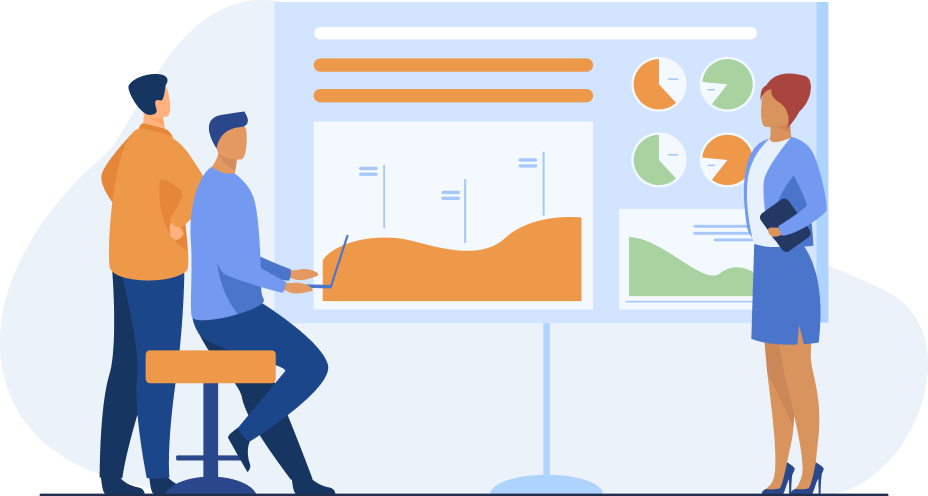 Personal Finance Planning
Personal Finance Planning This introductory personal financial planning course is the best start for beginners gearing up to commence their wealth creation journey. Here, you learn the fundamentals of managing personal finances, get acquainted with frequently-used finance words and jargon, and build a groundwork for advanced learning.

Personal Finance – an Introduction
Components of Personal Finance – Risk Planning, Emergency Planning, Retirement Planning, Debt Management, Asset Creation, and Investing
Goal-based Financial Planning & Steps to Achieve Them
Product Suitability for a Goal-Based Financial Plan
Insurance Products and their role in Financial Planning
Investment Planning
Tax Planning
Risk Management
In this segment, you learn to take baby steps in investing. Explore the basics of fundamental analysis with theory and practical on decoding the financial statements of companies.
 Personal Finance Planning
Personal Finance Planning In the advanced-level personal finance planning module, you learn to understand, p_f_a and draw financial plans, know the difference between investments and insurance, and get exposed to various types of mutual funds in the market and make an informed decision about managing your finance for better returns.

Personal Finance – Purpose & Process
Personal Finance Steps for Implementation
Cash Flows – Inflows & Outflows
Personal Net Worth Statement
Mathematics of Finance
Establishing Personal Life Goals and Quantifying the same
Building a Comprehensive Financial Plan – Detailed Process
Mutual Fund – a great tool to implement the financial plan – SIP / STP / SWP
Concepts and their usage in financial planning
Role of Insurance in the overall financial plan - Life & Health Insurance
Personal Taxation for Investments
Build your own Financial Plan
 Fundamental Analysis
Fundamental Analysis Company Financial Statement Analysis.

Quantitative Analysis of a Company
Learning to read and understand a Profit & Loss Account and Balance Sheet.
Cash Flow Analysis and Ratio Analysis for Investment Decision Making
Basic Financial Parameters will be taught as a part of Stock Selection Process. Activities Covered:
Mock activity – Identify a Stock and do a live case study covering the basic Financial Parameters and arrive at an appropriate investment decision.
 Fundamental Analysis
Fundamental Analysis 
Basics of Capital Markets
Understanding Primary Market - Equity & Debt
Understanding Secondary Market - Equity & Debt
Fundamentals of Equity Investing – EIC Analysis
Fundamental Analysis & Valuation for Equity Investing
Building an Equity Portfolio – Concept, Types, Methodologies, Process
Equity Portfolio Construction – Practical Activity
 Trading Acumen
Trading AcumenYour first step towards learning advanced trading methodologies, this module delves deeper into the technicalities involved in the science of trading. This comprehensive program covers Price, Volume, Momentum, and Derivatives data analysis.

Understand Dow theory and use it to decipher the megatrends, and also learn how to analyze the market reversals with Intermarket analysis
Analyze the strength of the economy and markets using technical analysis
Conduct Trend analysis using price action – Primary and secondary trends
Form patterns to identify trend continuation and trend reversals
Perform Volume analysis to identify trends and their reversals and institutional footprint in volumes
Understand the institutional participation using price and volume structure
Confidently conduct Momentum analysis to identify trends and trend reversals
Create high probability setup using price, volume, and momentum
Learn the basics of Futures and Options OI
Analyze intraday trends through data analysis
Proprietary intraday setup using options data
Devise Bullish and bearish strategies with option Greeks
Understand risk management and trading psychology
Do stock selection for swing and positional trading using cash and derivatives data
Duration
40 Hours
Mode
Online and offline mode
One live market to understand the concept
After the program, you'll be added to our group of aspiring traders, where you can clear doubts about trading related concepts during live market hours.
 The Mentoring Program
The Mentoring ProgramNo trader's journey is complete without a mentor who can act as a guiding force in his darkest hour. Approximately 95% of individuals will fail in their first few years of trading. A leader and mentor who has been through the same agony as the trader will be a blessing during the formative years. The mentoring program is your path from a researcher to a trader, where we handhold you through the highs and lows with our mentorship support and guidance.

The Mentoring program trains you as a mentee on advanced Technical Analysis techniques, including Price action studies, volume studies, momentum studies, and volatility studies.
The program helps you to get a better hold on analyzing the charts and identifying entries, exits, and position sizing. This course is designed for people who understand technical analysis but need help to make consistent profits.
We train you to trade in different market conditions using our proven strategies. You will also learn how to read derivatives data to identify trends and trend reversals and pick the right stock at the right time. Get hands-on experience working on our proprietary intraday index options trading setup, and delve deeper into options Greeks, which will help you to plan trading based on IV, delta, or theta. The program focuses on putting together studies to plan positional, swing & intraday trades. We help you refine your skills in technical analysis, derivatives data analysis, options Greeks, and strategies to improve profitability and reduce risk. With the help of positional, swing & intraday trading, you can easily create an income source.
Duration
6 months
Mode
Online and offline mode
During the program, daily updates about the market will be provided. You will be added to a community where we continue to extend knowledge support after the completion of the program.
 Advance RSI Program
Advance RSI Program
Understanding RSI
Conventional way of using RSI
Un-conventional way of using RSI
Understanding overbought and oversold conditions
Trend Identification using RSI
Swing trading using RSI
Entry and Exits based on RSI
Price targets based on RSI
Trend reversals signals using RSI
High momentum trades using RSI
Weak momentum trades using RSI
Concept of divergence, Hidden divergence
Declining tops and raising bottoms in RSI for trend reversals
Naked and enhanced signals using RSI
Concept of Positive and negative reversals
RSI and trendlines
Case studies using RSI for major Tops and bottoms in the last few years
RSI and multiple time frame analysis
Duration
20 Hours

Intro to call and put options
Options buying v/s writing
Statistics advantage of writing v/s buying
Intro to options open interest
4 combinations of options OI for the analyzing direction of the markets
Identifying trends through Data
The intraday setup for options buying
Directional options selling using PCR
Non-directional option selling - entry and exit
Catching Gamma on options expiry
Duration
8 Hours
Mode
Online and offline mode
One live market to understand the concept post the program. We will add you to the community to reinforce the learning and clarify any doubts.
 Comprehensive Program on Price and Volume
Comprehensive Program on Price and Volume
Introduction to Dow theory
How to use Dow theory for identifying Economic cycles
The 4 stages of the market
Bull markets and their phases and case study to identify the same
Bear Markets and its phases and case study to identify the same
Understanding valid demand and supply zones on the chart
Different chart patterns in the accumulation and distribution phases of the market
Trend continuation patterns that you will find in bull and bear market
Price targets of the patterns
Short-term continuation patterns
Extending Dow theory to intraday trading
Combining multiple time frames for good entry and exits
Importance of volume while markets are trended and how volumes can hint trend reversals
Buying and selling climax using volume
Volume to identify good support and resistance
Stock selection using volumes
Institutional footprint in price and volume and how to capitalize the same
High Probability Candle sticks patterns and understanding the emotions behind those formations
Risk management
Duration
25 Hours
 Building Trading Systems Using Moving Averages
Building Trading Systems Using Moving Averages
Difference between SMA, EMA, and WMA
Right combinations for Moving averages
Trend Identification using MA
Identifying strong trends using moving averages
6 different phases of the market using moving average combinations
Entry based on moving average
Moving averages for long- and short-term trends
6 Different ways of using moving averages
Identifying Market breadth using MA
Stock selection using moving averages
Trend reversals using MA
Partial and complete exits using MA
Duration
4 Hours
Copyright © 2022 | ( DELTACAPITIS) All Rights Reserved
Designed By Orange Digital Media